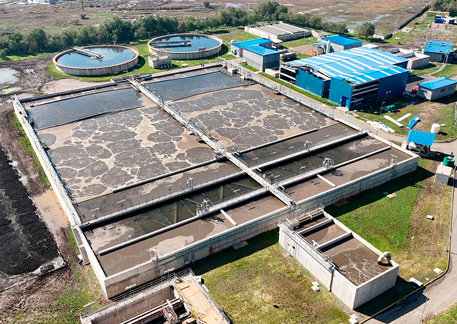Sacyr Water has collaborated with two research centers to launch the LodoVerde (GreenSludge) project in Chile with which it will reuse sludge from wastewater treatment plants to turn it into fertilizer for agriculture.
The first studies of this project estimate that the fertilizer resulting from the recovery process will increase crop productivity by 20%. The goal is to process up to 8,000 tons of enriched sludge annually and incorporate them into the food growing industry by the end of December 2026.
"Sacyr Water has turned this challenge into a solution to reuse 100% of the sludge, developing a nutritionally and biologically enriched product by incorporating microorganisms that solubilize phosphates, struvite and other mineral sources apt for agricultural use as fertilizers" explains Ricardo Herrera, Director of the LodoVerde project.
This innovative project has a timeline of two years. It is currently in the initial laboratory stage, where real conditions are simulated, and will conclude with its implementation.
Sacyr Water is carrying out experimental tests in the facilities of the Curauma Biotechnology Center (NBC) of the Pontificia Universidad Católica de Valparaíso and is collaborating with Abonos San Francisco (ASF) -a company with experience in the development of agricultural solutions from various organic waste and industrial by-products- for the adjustment of the formulation that combines the different microorganisms. The partnership between Sacyr and ASF will allow all the sludge generated in their plants to be introduced in the market as agricultural fertilizer.
This process will prevent sludge from Sacyr's wastewater treatment plants in Chile from being taken to a "sanitary landfill", a special landfill for this type of waste.
